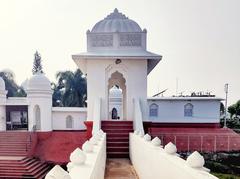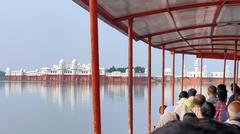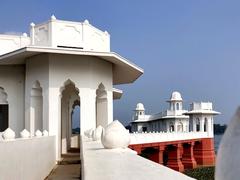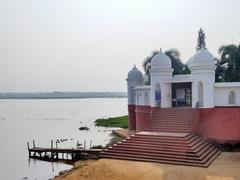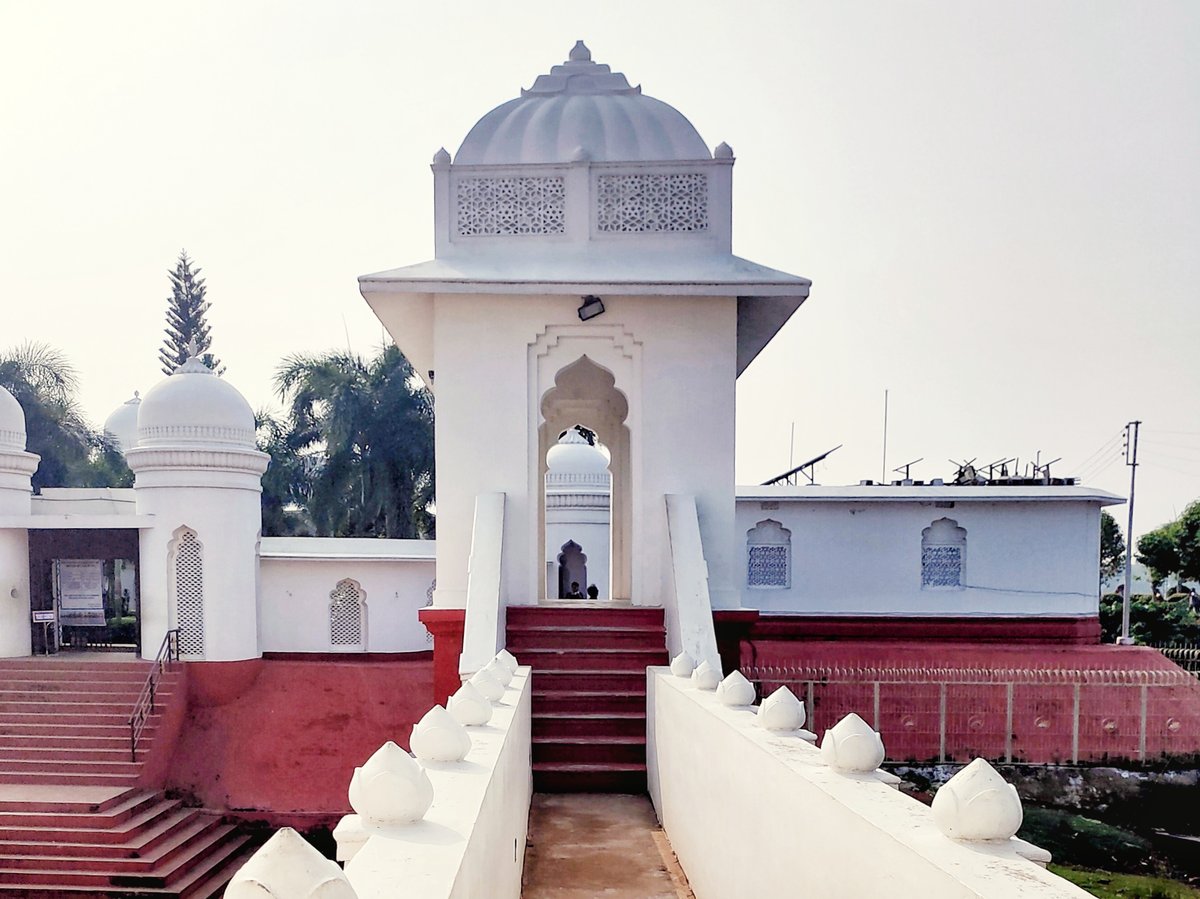
Comprehensive Guide to Visiting Neermahal, Cumilla Adarsha, Bangladesh
Date: 18/07/2024
Introduction
Neermahal, often referred to as the ‘Water Palace,’ is a captivating architectural gem situated in the middle of Rudrasagar Lake in Cumilla Adarsha, Bangladesh. This magnificent palace, commissioned by Maharaja Bir Bikram Kishore Manikya Bahadur and completed in 1938, serves as a testament to the rich cultural and historical heritage of the Tripura Kingdom. Designed by British architect Martin & Burn Company, Neermahal is a harmonious blend of Hindu and Mughal architectural styles, reflecting the cultural amalgamation of its time (Tripura Tourism).
The palace was primarily constructed as a summer retreat for the royal family, offering a serene escape from the sweltering heat of the plains. Its strategic location on Rudrasagar Lake not only provides a picturesque setting but also highlights the Maharaja’s vision of creating a retreat that harmonizes with nature. The palace’s intricate water supply system, luxurious rooms, grand ballrooms, and lush gardens make it a must-visit destination for history enthusiasts and architecture aficionados alike.
This comprehensive guide aims to provide you with all the essential information for visiting Neermahal, including its visiting hours, ticket prices, historical significance, travel tips, and nearby attractions. Whether you are planning a visit or simply curious about this architectural marvel, this guide will offer valuable insights into the grandeur and cultural richness of Neermahal.
Table of Contents
- Introduction
- Origins and Construction
- Architectural Significance
- Historical Events and Royal Occupancy
- Visitor Information
- Travel Tips
- Nearby Attractions
- Preservation and Restoration Efforts
- Cultural and Tourism Impact
- FAQ
- Conclusion
Origins and Construction
Neermahal was commissioned by Maharaja Bir Bikram Kishore Manikya Bahadur of the Tripura Kingdom in 1930 and completed in 1938. The primary purpose of Neermahal was to serve as a summer retreat for the royal family, providing a serene escape from the sweltering heat of the plains.
The construction of Neermahal was a significant undertaking, involving the expertise of British architect Martin & Burn Company. The design of the palace is a unique blend of Hindu and Mughal architectural styles, reflecting the cultural amalgamation prevalent during that era. The palace spans approximately 5.3 square kilometers, making it one of the largest water palaces in the region.
Architectural Significance
Neermahal’s architecture is a testament to the grandeur and opulence of the Tripura Kingdom. The palace is divided into two main sections: the Andar Mahal (inner palace) and the Bahir Mahal (outer palace). The Andar Mahal was reserved for the royal family and their close associates, featuring luxurious rooms, a grand ballroom, and a private garden. The Bahir Mahal, on the other hand, was used for public gatherings and included an open-air theater, guest rooms, and administrative offices.
One of the most striking features of Neermahal is its intricate water supply system. The palace was designed to harness the natural flow of water from the Rudrasagar Lake, ensuring a constant supply of fresh water. This system not only provided water for daily use but also helped in maintaining the lush gardens and fountains within the palace complex.
Historical Events and Royal Occupancy
Neermahal played a crucial role in the social and political life of the Tripura Kingdom. The palace was the venue for numerous royal ceremonies, cultural events, and political meetings. Maharaja Bir Bikram Kishore Manikya Bahadur, known for his progressive vision, used Neermahal as a platform to promote art, culture, and education. The palace hosted several renowned artists, musicians, and scholars, making it a hub of intellectual and cultural exchange.
During the partition of India in 1947, the Tripura Kingdom faced significant political upheaval. Maharaja Bir Bikram Kishore Manikya Bahadur passed away in 1947, and his son, Maharaja Kirit Bikram Kishore Manikya Bahadur, ascended the throne. The political landscape of the region changed dramatically, leading to the eventual merger of the Tripura Kingdom with the Indian Union in 1949. Despite these changes, Neermahal continued to be a symbol of the royal heritage and cultural legacy of the Tripura Kingdom.
Visitor Information
Neermahal Visiting Hours
The palace is open to visitors from 9:00 AM to 5:00 PM daily.
Neermahal Tickets
The entry fee for Neermahal is approximately 50 INR for Indian citizens and 100 INR for foreign tourists. Children below the age of 5 can enter for free.
Guided Tours
Guided tours are available and are highly recommended for those interested in the detailed history and architectural significance of the palace.
Travel Tips
Best Time to Visit
The best time to visit Neermahal is between October and February when the weather is pleasant.
Photography
The picturesque setting of Neermahal makes it a perfect spot for photography. Don’t forget to bring your camera!
Special Events
The annual Neermahal Water Festival held in August features traditional boat races, cultural performances, and local crafts.
Nearby Attractions
Rudrasagar Lake
Enjoy a boat ride on Rudrasagar Lake to get a breathtaking view of Neermahal from the water.
Tripura Sundari Temple
Located nearby, this ancient temple is a significant religious site and worth a visit.
Ujjayanta Palace
Another architectural marvel, Ujjayanta Palace, is located in Agartala, the capital city of Tripura.
Preservation and Restoration Efforts
Over the years, Neermahal has faced several challenges, including natural wear and tear, neglect, and environmental factors. However, concerted efforts have been made to preserve and restore this architectural gem. The Archaeological Survey of India (ASI) and the Government of Tripura have undertaken various initiatives to maintain the structural integrity and aesthetic appeal of Neermahal.
One of the significant restoration projects was carried out in the early 2000s, focusing on repairing the palace’s foundation, restoring the intricate carvings, and reviving the water supply system. These efforts have helped in preserving the historical and cultural significance of Neermahal, ensuring that it remains a prominent tourist attraction and a symbol of the region’s rich heritage.
Cultural and Tourism Impact
Neermahal has emerged as a major tourist destination, attracting visitors from across the globe. The palace’s unique location in the middle of Rudrasagar Lake offers a picturesque setting, making it a popular spot for photography and sightseeing. The annual Neermahal Water Festival, held in August, is a significant cultural event that showcases traditional boat races, cultural performances, and local crafts. This festival not only promotes tourism but also helps in preserving and promoting the cultural heritage of the region.
In recent years, the Government of Tripura has taken several initiatives to enhance the tourism infrastructure around Neermahal. These include the development of eco-friendly resorts, improved transportation facilities, and guided tours that provide visitors with an in-depth understanding of the palace’s history and significance. The integration of modern amenities with the historical charm of Neermahal has made it a must-visit destination for history enthusiasts, architecture aficionados, and nature lovers alike.
FAQ
What are Neermahal’s visiting hours?
Neermahal is open from 9:00 AM to 5:00 PM daily.
How much are tickets for Neermahal?
The entry fee is approximately 50 INR for Indian citizens and 100 INR for foreign tourists. Children below the age of 5 can enter for free.
What are the best times to visit Neermahal?
The best time to visit is between October and February when the weather is pleasant.
Conclusion
Neermahal stands as a testament to the architectural brilliance and cultural richness of the Tripura Kingdom. Its history, marked by royal grandeur, political significance, and cultural vibrancy, continues to captivate visitors. The ongoing preservation efforts and the promotion of cultural tourism ensure that Neermahal remains a cherished heritage site, offering a glimpse into the glorious past of the region. For more information, you can visit the Tripura Tourism website.
References
- Tripura Tourism. (n.d.). Retrieved from Tripura Tourism
